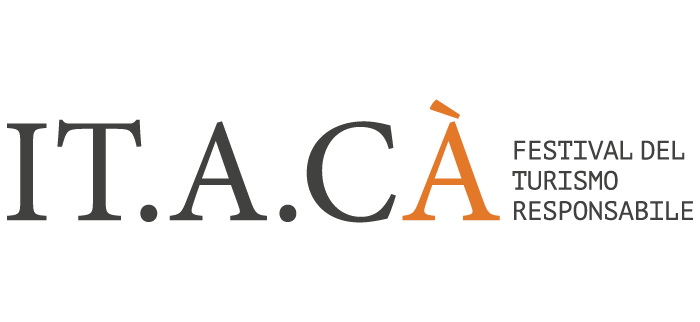IT.A.CA_Contest 2013
Concorso internazionale di parole e immagini
Tre le sezioni: fotografia, illustrazione, racconto breve
International competition of words and images
In three sections: photography, illustration, short stories
Cathy Bartholomew, Itaca_Contest 2012
La pelle levigata degli oggetti / è tesa come la tenda di un circo.
Siamo come palpebre, dicono le cose, / sfioriamo l’occhio e l’aria, l’oscurità / e la luce, l’India e l’Europa…
Adam Zagajewski (Dalla vita degli oggetti, Adelphi, 2012)
The smooth skin of the objects/ is tense like the tent of a circus.
We are like the eyelids, the things say,/graze the eye and the air, the darkness /and the light, India and Europe…
Adam Zagajewski (Dalla vita degli oggetti, Adelphi, 2012)
Noi e le cose.
Gli oggetti in viaggio
Fagotti, zaini, valigie, souvenir, merci e mercati delle pulci, oggetti indecifrabili e quotidiani, pneumatici come altalene e guinzagli per aragoste, oggetti con cui parti e oggetti che trovi dove arrivi. Oggetti trasformati, riciclati, riassemblati e riparati, portati dal mare o trovati per strada, oggetti da collezione ed effetti personali, bagagli inseparabili e aggeggi incomprensibili: il viaggio è anche occasione di nuova relazione con gli oggetti, che, lontani da casa, possiamo guardare in modo diverso, quasi scoprendoli per la prima volta.
Anche gli oggetti consueti, in viaggio, si trasformano: ci seguono come aiutanti magici nei bagagli, ci stupiscono nei paesi stranieri, tolti dall’opacità del quotidiano, perché sono vestiti di simboli e segni per noi stranianti.
In viaggio anche le cose raccontano storie, necessitano di traduzione o adattamento (come le prese elettriche), rimangono nella memoria e nella valigia, fuori contesto esprimono lo spaesamento che è di ogni viaggio e migrazione.
Lo straniamento del viaggiatore restituisce materia brillante agli oggetti, toglie loro l’imballaggio delle consuetudini e dilata i confini del viaggio per restare patria ideale, Itaca, di ogni sguardo.
Us, and things.
Objects in travel
Knapsacks, backpacks, suitcases, souvenirs, flea markets and used goods, objects foreign and familiar, swings made of tires and leashes for lobsters, objects that we leave with and those that we find at our destinations. Objects that are transformed, recycled, repaired and reassembled, carried by the sea or found on the street; collectibles and personal effects; baggage that we cannot part with; gizmos that we cannot understand: travel is also an opportunity for a new relationship with the objects which, far from home, we can look at with new eyes, almost as if discovering them for the first time.
Even familiar objects are transformed by travel: they follow us like magical amulets in our luggage and amaze us in foreign countries, removed from the realm of the ordinary because they are clothed in symbols and signs that alienate us.
In travel, even objects can tell stories, requiring translation or adaptation – like electric outlets – and remaining in our memories and our suitcases; taken out of context they represent the disorientation that comes along with every journey and migration.
The estrangement of the traveler makes the objects like new again, removing the packaging of their customs and tradition, and expanding the boundaries of the journey to make every destination the ideal homeland – Ithaca.
A chi si rivolge il concorso
Viaggiatori, turisti, migranti, artisti, scrittori, illustratori, fotografi, studenti e tutti coloro che hanno voglia di raccontare la propria visione, esperienza e interpretazione originale di viaggio con un racconto breve, una fotografia, un’illustrazione.
Eligible participants
Travelers, tourists, migrants, artists, writers, illustrators, photographers, students and all those who wish to portray their own concept, experience, or original interpretation of travel with a short story, a photograph, or an illustration.
Come partecipare
Per partecipare al concorso inviare la propria opera (fotografia, illustrazione o racconto breve) in allegato a una mail, completa di contatti e breve profilo dell’autore, all’indirizzo: itacacontest@gmail.com entro il 15 Aprile 2013. Nominare il file dell’opera con il proprio nome_cognome (Es: ulisse_nessuno.doc).
How to participate
Send original work (photograph, illustration or short story) in an email attachment, complete with contact information and a brief profile of the artist, to: itacacontest@gmail.com by 15 April 2013. Save the file with your work as first name_last name (Eg: ulysses_nobody.doc).
Le opere verranno valutate secondo queste modalità
Racconto breve
Max 4000 caratteri, spazi inclusi.
Formato del file: documento word
Fotografia
Dimensioni dell’immagine: 1920×1280 pixel
Dimensione massima del file: 1MB
Formato del file: jpg
N.B. Agli autori selezionati verrà richiesta un’immagine a risoluzione maggiore, adatta per la stampa (300 dpi, lato lungo 40 cm)
Illustrazione
Dimensioni dell’immagine: 1920×1280 pixel
Dimensione massima del file: 1MB
Formato del file: jpg
N.B. Agli autori selezionati verrà richiesta un’immagine a risoluzione maggiore, adatta per la stampa (300 dpi, lato lungo 40 cm) Gli autori possono concorrere anche per più di una sezione, sottoponendo però non più di un’opera per tipo
Entries to be evaluated must fit the following criteria
Short stories
Max 4000 characters, including spaces
File format: word document
Photography
Image size: 1920×1280 pixels
Max file size: 1MB
File format: jpg
N.B. Selected artists will be asked to submit a higher resolution image, suitable for print (300 dpi, 40 cm on the long side).
Illustration
Image size: 1920×1280 pixels
Max file size: 1MB
File format: jpg
N.B. Selected artists will be asked to submit a higher resolution image, suitable for print (300 dpi, 40 cm on the long side). Artists may enter work in more than one category, but only one entry permitted per category
Per maggiori informazioni su giuria del concorso e premi trovate tutto qui
Simona de Leo, Itaca_Contest 2012
Il concorso è in collaborazione con PenTales di New York















Lascia un Commento
Vuoi partecipare alla discussione?Fornisci il tuo contributo!